A Western Bluebird posed for one of my favorite images of the trip.

A dripping faucet at an adjacent vacant RV parking space attracted birds and mammals, among them a pair of Hairy Woodpeckers.
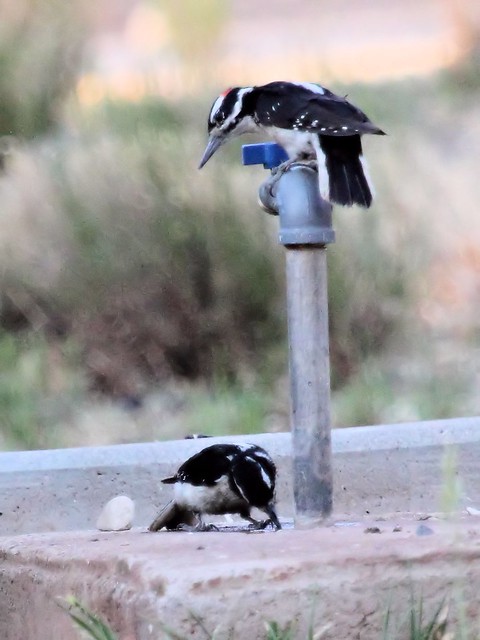
These western Hairy Woodpeckers have very few white markings on their wings as compared to the eastern form. Their larger size, proportionally longer and heavier bill and lack of black markings on their outer tail feathers distinguish them from the similarly-plumaged Downy Woodpecker.
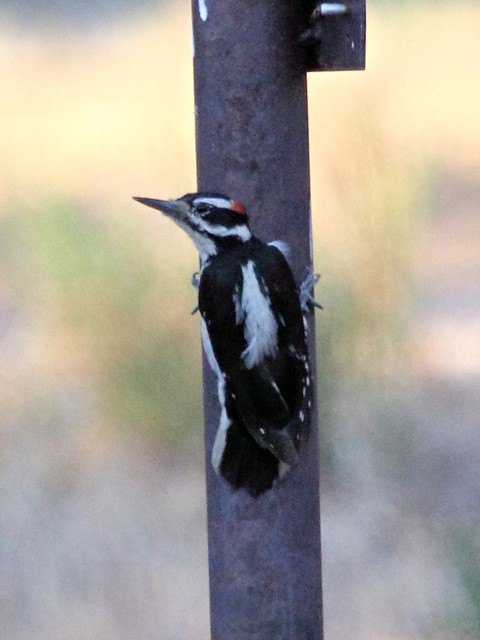
A Steller's Jay stopped for a drink.

The next morning a cow Elk visited the puddle and then paraded right in front of our RV.
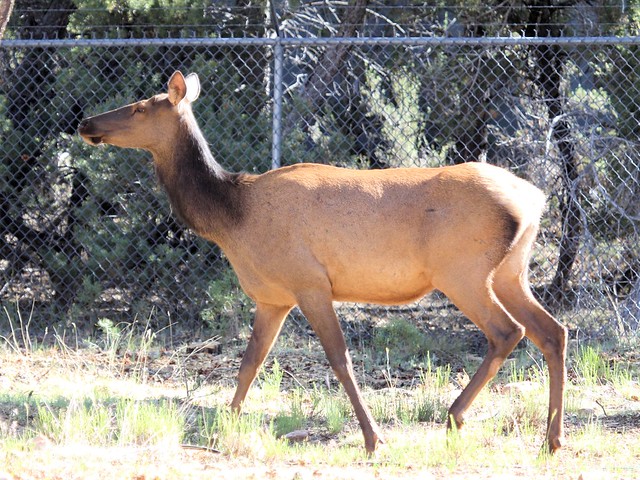
A Black-throated Gray Warbler foraged in the Pinyon Pine that partially shaded our vehicle.
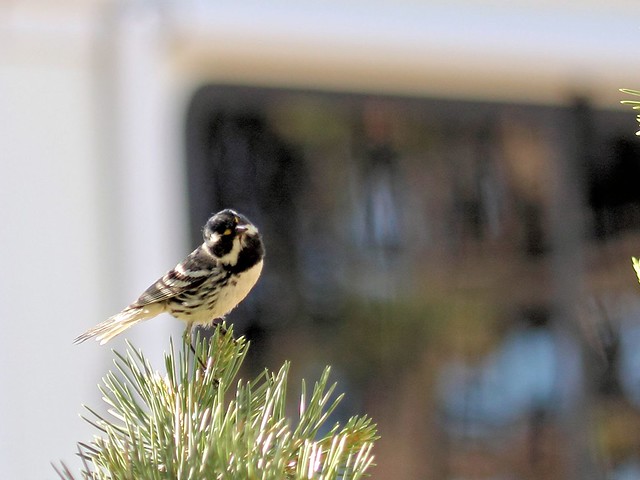

Nearby, a fledgling Western Bluebird begged to be fed.

The female parent responded.
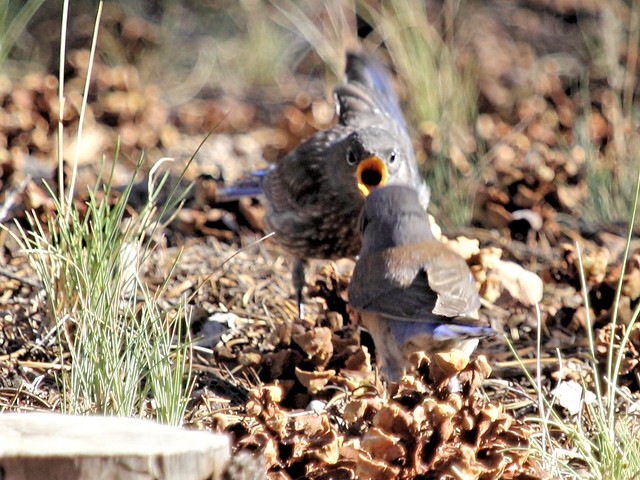
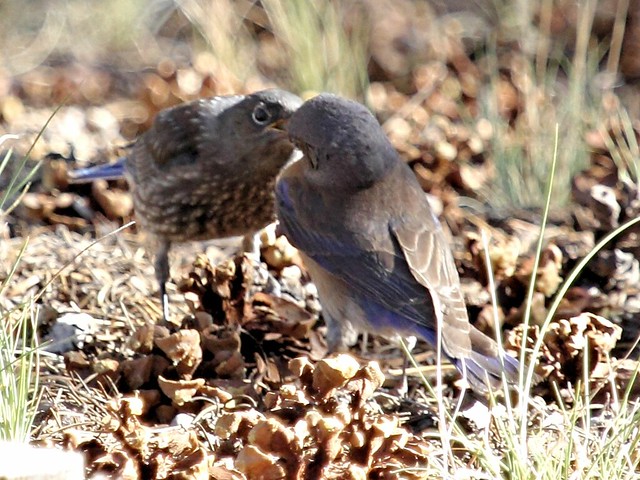
Both parents rested on an overhead wire.
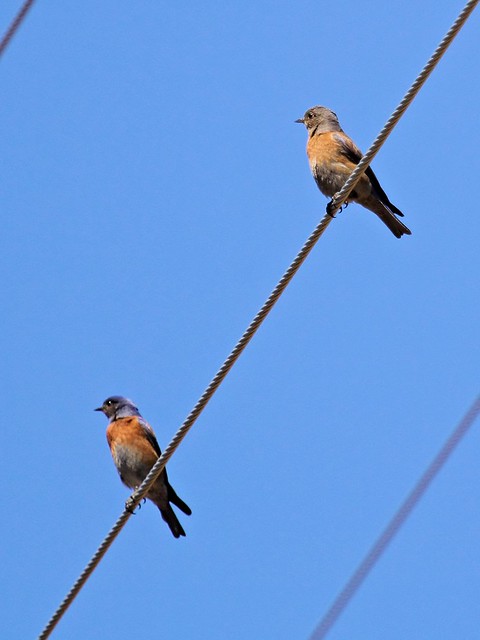
Lesser Goldfinches were common.
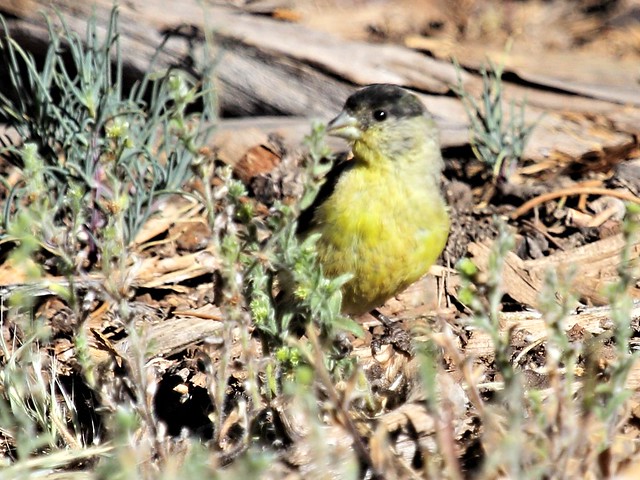
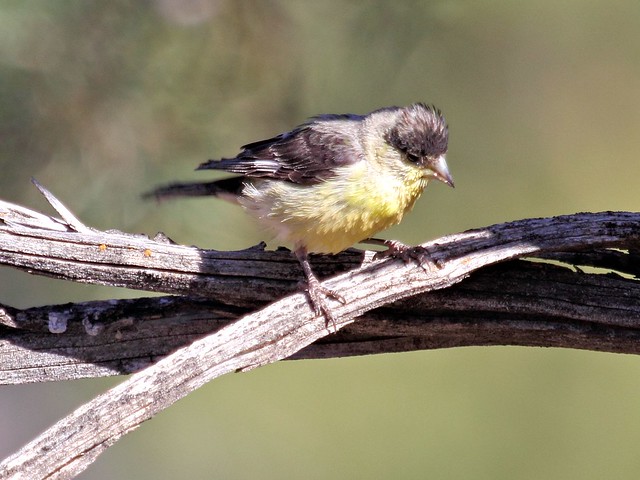
Later that morning, armed with the long lens (100-400mm zoom) lent to me by my son-in-law, we boarded the free shuttle westward to join a second that took us along Hermit Road to Hopi Point, where we hoped to see California Condors.
At Hopi Point, we had a magnificent view of the formation known as Battleship Rock.
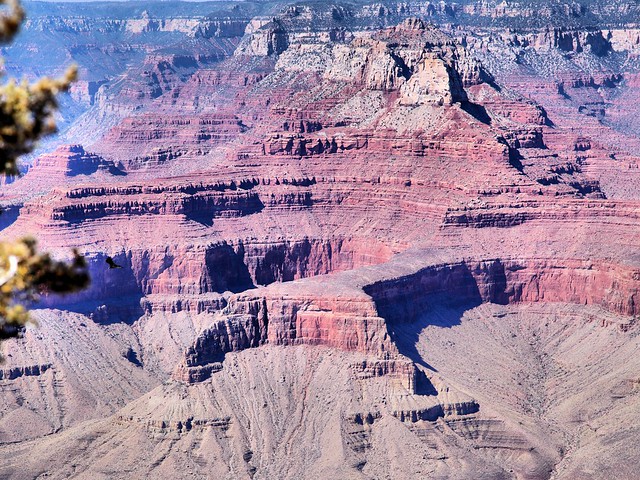
We then walked the trail along the rim westward to nearby Powell Point, where we met "Condor Bob" George and another researcher. Bob was busy answering questions about the huge birds, which are raising one chick in a cave on the west side of Battleship Rock.

The researcher is pointing a directional antenna towards the cave in the west-facing far end of Battleship Rock. He detected no signals, and said that the opposite side of the rock at El Tovar Hotel was where they usually spent the day. Both parents had brought food for the chick, so it was unlikely that they would show up again until nightfall.
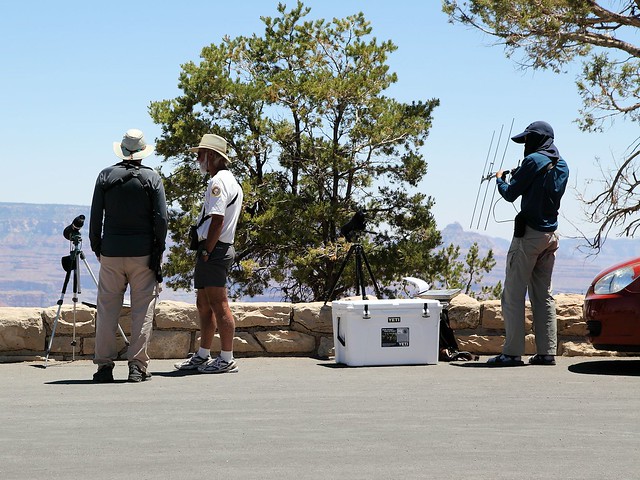
The cave is visible in the lower left portion of this photo-- click on it to see a marker and also obtain enlarged views.
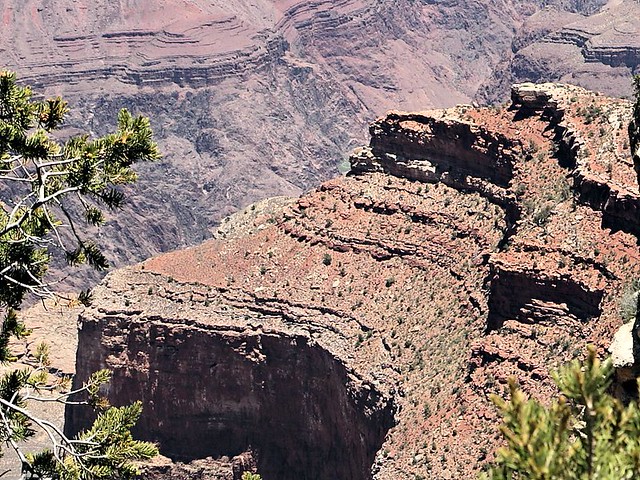
The next afternoon, expecting only landscape photos and also to save weight, I left the telephoto lens back at the RV as we went sightseeing on the shuttle bus to viewpoints along the eastern part of the National Park. We returned earlier than expected, and made an unplanned visit to the El Tovar Hotel overlook. As soon as I looked down I saw three California Condors far below. The light reflected from their wings as they soared along the east side of Battleship Rock. My only image, at a focal length of only 105mm, shows them as distant white specks. One is in the upper left corner and the other in the lower right. (Click on the image to highlight the location of two condors).

This was the best of several photos, cropped and highly enlarged, of the condor in lower right. The condor is flying towards the camera. Reddish light reflects from its bald head and a there is a highlight on its left wing due to reflection from the ID tag.

California Condor populations steadily decreased during the 20th Century due to loss of habitat, poaching and poisoning by lead in ammunition used in predator control and hunting. They disappeared from Arizona in 1924. They were listed as an endangered species in 1967. Their numbers continued to decline despite a captive breeding program, and in 1987 the 22 remaining condors were captured.
"All hope for condor recovery was now placed on captive breeding programs, and the task was formidable. Because recruitment into the population is very low, captive breeding techniques were developed in which eggs are removed as they are laid, usually causing the captive condors to lay a second and sometimes third egg. The extra eggs are incubated and chicks are raised by caretakers using a hand puppet shaped like a parent condor head. The puppet prevents the young condors from imprinting on people. Condor chicks that are not raised by puppets, are raised by their parent birds..." (More at California Condor captive breeding programs)
"As of April 2013, 73 condors soar over northern Arizona and southern Utah. Many of them frequent Grand Canyon, especially during the summer. They come from all four captive breeding locations. But more importantly, a number of them come from wild nest caves in and around the Grand Canyon..." (More at
http://www.nps.gov/grca/naturescience/california-condors.htm#CP_JUMP_366045)
at least you got to see them! awesome! loved the little bluebird and the warbler, too.
ReplyDeleteCool seeing the Condors! Congrats! I really love the sweet Bluebirds. Great photos!
ReplyDeleteA pity you did not get to see the condors, at least you learned a lot about them and could drink in that magnificent scenery.
ReplyDeleteBeautiful shots of my favorite Western Bluebird Ken. That first image of the female against the green background is gorgeous.
ReplyDeleteI'm glad to hear about the increased number of Condors raised in the wild but frustrated by the lack of a law to ban lead ammunition. So many of these endangered birds are killed by lead poisoning.
I'm glad you got to see them and I can imagine how frustrated you must have been not to have your long lens with you. I'm familiar with that scenario.
Great you got to see them. We missed them on our trip. You saw some great wildlife while you were there.
ReplyDeleteHI Ken What a great post with varied birds. I loved the set of the parents feeding the chicks and Wow! you actually saw Condors. How wonderful although probably frustrating as you had the wrong lens with you. Have a great weekend. Margaret
ReplyDeleteWhat a wonderful trip! Thank you for sharing the birds and beautiful landscapes! Outstanding that you saw the Condors!
ReplyDeleteBeautiful shots of birds in action.
ReplyDeletewow - such magnificent scenery; Condor Bob, what a wonderful title! Looks like an interesting setup they're working with tracking the Condor too. Fabulous photos, so many birds this post; most enjoyable
ReplyDeleteWhat a delightful post. How exciting to see these magnificent condors.
ReplyDeleteI love the first image too!
I just found your blog and I totally love it!
ReplyDeleteit looks really nice and the content is very good!
las vegas helicopter tours